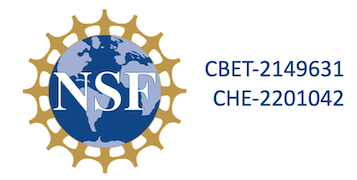
We study the properties of nanoscopic wires, particles, and films prepared by electrodeposition. Our objective is to understand how these nanomaterials behave in devices such as chemical sensors, biosensors, thermocouples, thermoelectric generators, photodetectors, and transistors. Our research is funded by the National Science Foundation:

Projects of current interest are the following:
Hydrocarbon Sensing. The key attribute of nanowires in chemical sensing is their tremendous surface area: volume ratio. In our gas sensing experiments, one surprise has been that the chemisorption of gas molecules to the metal surface is sufficient to generate a significant, measurable change in the wire resistance, enabling the detection of some gases at concentrations in the ppm range. Chemical sensors designed for the detection of hydrocarbons, and operating on this principle, are of current interest.
Project Leader: Nick Humphrey.
Energy storage. The high surface area : volume ratio of nanowires makes them attractive candidates for electrodes in batteries and supercapacitors. The key fundamental question is: What limits the performance of these materials? We are focusing attention on Mn(II)S which is a conversion material that stores charge as a change in the redox state of the Mn centers. The challenge is to prepare Mn(II)S nanomaterials that charge and discharge rapidly while also producing the highest possible energy density.
Project Leader: Heriberto Zuleta Flores.
''Indirect'' Gas Sensing. Metal nanowires can detect hydrogen, and now ethylene, but virtually nothing else. How can the spectrum of accessible molecules be broadened? One way is to detect the hydrogen produced by target molecules that dehydrogenate on a transition metal surface. Can this work? We'll see.
Project Leader: Eric Choi.
research
::
people
::
publications
::
teaching
::
outreach
© 2023, Reginald M. Penner

